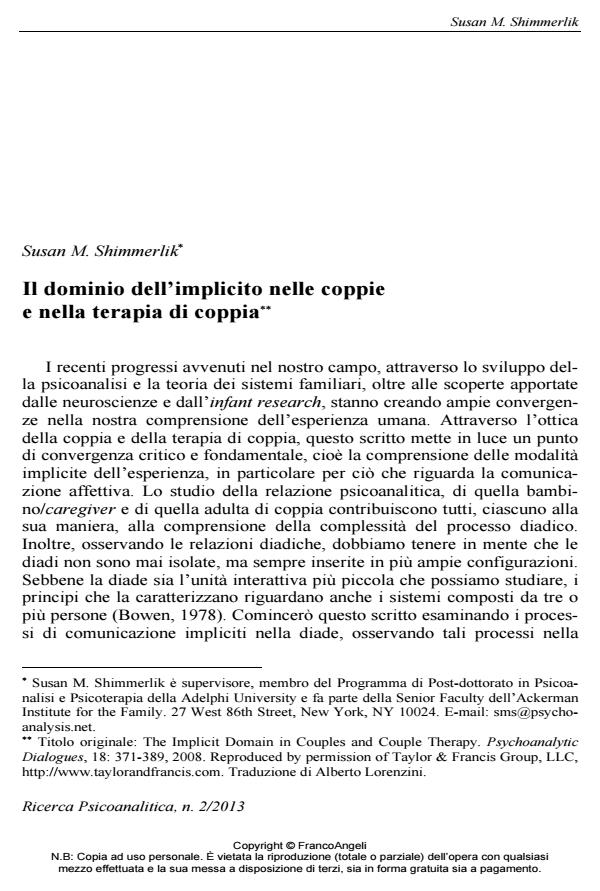Il dominio dell’implicito nelle coppie e nella terapia di coppia
Titolo Rivista RICERCA PSICOANALITICA
Autori/Curatori Susan M. Shimmerlik
Anno di pubblicazione 2013 Fascicolo 2013/2
Lingua Italiano Numero pagine 20 P. 9-28 Dimensione file 230 KB
DOI 10.3280/RPR2013-002002
Il DOI è il codice a barre della proprietà intellettuale: per saperne di più
clicca qui
Qui sotto puoi vedere in anteprima la prima pagina di questo articolo.
Se questo articolo ti interessa, lo puoi acquistare (e scaricare in formato pdf) seguendo le facili indicazioni per acquistare il download credit. Acquista Download Credits per scaricare questo Articolo in formato PDF

FrancoAngeli è membro della Publishers International Linking Association, Inc (PILA)associazione indipendente e non profit per facilitare (attraverso i servizi tecnologici implementati da CrossRef.org) l’accesso degli studiosi ai contenuti digitali nelle pubblicazioni professionali e scientifiche
I recenti progressi avvenuti attraverso lo sviluppo della psicoanalisi e la teoria dei sistemi familiari, oltre alle scoperte apportate dalle neuroscienze e dall’infant research, creano ampie convergenze nella nostra comprensione dell’esperienza umana. Un’importante convergenza si è realizzata grazie alla comprensione delle modalità implicite dell’esperienza, in particolare per ciò che riguarda la comunicazione affettiva. Attraverso l’ottica della coppia e della terapia di coppia, questo scritto esamina le modalità in cui i modelli relazionali familiari e di coppia si attuano nel dominio dell’agire, attraverso processi di comunicazione non conscia e implicita. Avendo compreso che la natura dell’esperienza implicita è tale per cui solo attraverso l’agito essa diventa accessibile, sosterrò che buona parte di ciò che abbiamo immagazzinato nel dominio dell’implicito rimane inserito e agito nelle relazioni più intime e di conseguenza può diventare accessibile solo nel contesto di quelle relazioni. Esplorerò poi alcune implicazioni dei processi impliciti, in relazione alla triade formata dal terapeuta e dalla coppia in terapia.
Parole chiave:Dominio dell’implicito, terapia di coppia, teoria dei sistemi familiari, BCPSG, processi di comunicazione
Susan M. Shimmerlik, Il dominio dell’implicito nelle coppie e nella terapia di coppia in "RICERCA PSICOANALITICA" 2/2013, pp 9-28, DOI: 10.3280/RPR2013-002002